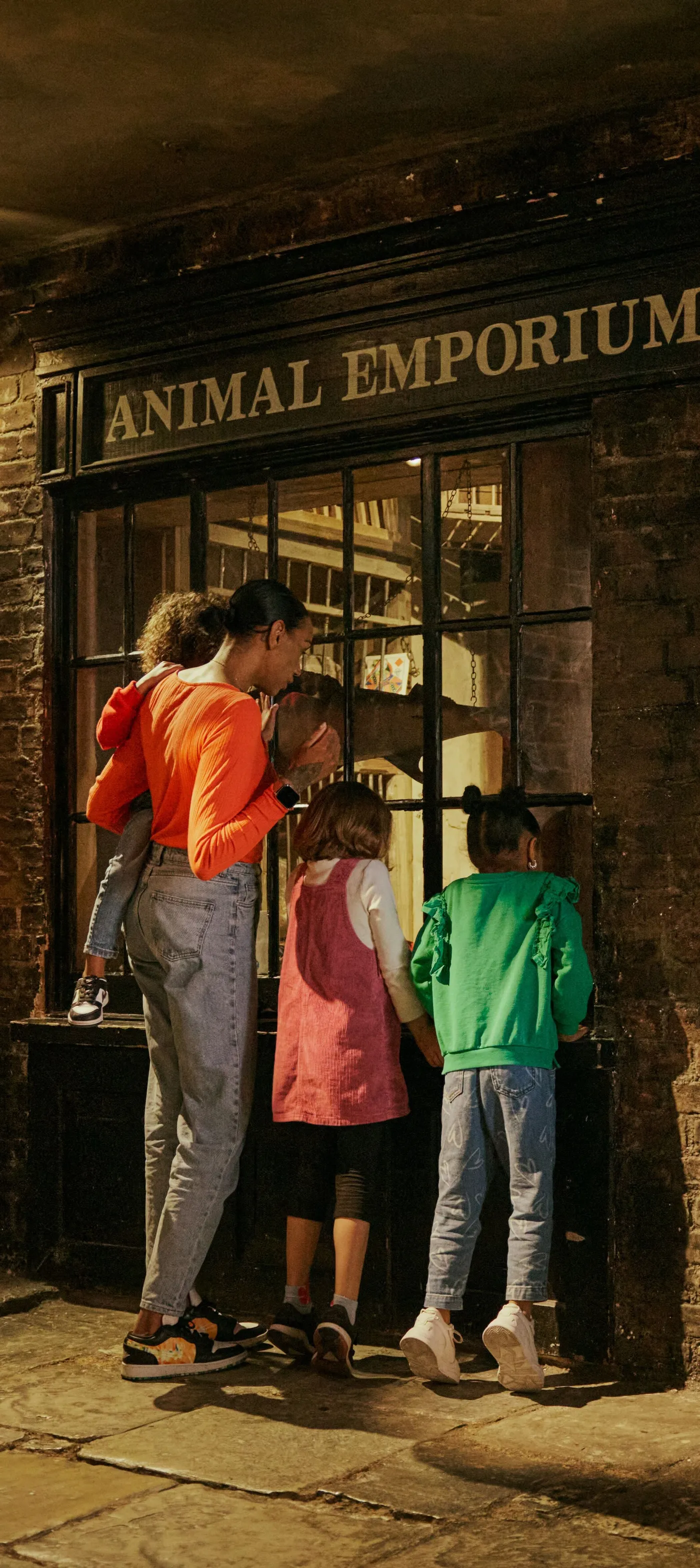Who was publicly executed in London?
Tens of thousands were executed in public in London. Here’s a closer look at how 13 people – from a cook to a king – came to meet this brutal end.
1196–1868

This page contains content some people may consider sensitive, or find offensive or disturbing. Understand more about how we manage sensitive content.
Profiles of the publicly executed
The first recorded execution at Tyburn, London’s main execution site, took place in 1196. Across the 700 years that followed, tens of thousands of people met their end in London as part of a gruesome show.
They came from all walks of life, accused of all sorts of crimes. Through their trials and executions, some became infamous villains, others famous heroes.
William Wallace, 1305
In 1305, the hero of Scottish independence William Wallace was declared guilty of treason and executed at Smithfield, north-west of the City of London.
For his resistance against English control of Scotland, Wallace was arrested near Glasgow and brought to London. He was hanged, drawn and quartered for his defiance.
Wallace is the first person we know to have had his head displayed on London Bridge as a warning to others. A plaque commemorating him can be found at St Bartholomew’s Hospital.
Richard Roose, 1531
Two people died when Roose, a cook in the household of the Bishop of Rochester, poisoned their porridge. King Henry VIII declared that Roose’s crime was treason. He passed a new law – the “Acte for Poysoning” – which set boiling as the method of execution.
Roose was boiled alive at Smithfield on 5 April 1531, apparently being dipped up and down in the water until he was dead.
Anne Askew, 1546
At a time when England was still a Catholic country, Anne Askew was a committed Protestant.
Askew was arrested in May 1546 for her preaching and beliefs, then stretched on the rack at the Tower of London. Despite the torture, she refused to renounce her faith.
Injured from the torture, she was carried on a chair to the execution site at Smithfield. Again, she was asked to repent, but refused. Askew was burned to death alongside three others in front of a large crowd on 16 July 1546.
Charles I, 30 January 1649
In the midst of the English Civil Wars, as those loyal to Charles I battled supporters of Parliament, the king was taken prisoner.
From captivity, Charles plotted for a Scottish army to invade and help him regain control. His plan was discovered and the king was convicted of “High Treason and other High Crymes”.
He was beheaded in 1649 on a platform built outside Banqueting House – a building in Whitehall associated with Charles’ lavish lifestyle. An unknown witness described the moment: “after a little pause, the King stretching forth his hands, the Executioner at one blow, severed his head from his body.”
John ‘Jack’ Sheppard, 16 November 1724
Jack Sheppard became a working-class hero for his escapes from prison, but was finally hanged at Tyburn in 1724. Convicted for theft, he died in front of a huge and supportive crowd.
Sheppard’s fame continued for more than a hundred years after his death, helped by plays, books and pamphlets written about his life.

A print of Jack Sheppard in his cell at Newgate Prison.
Sarah Malcolm, 7 March 1733
Malcolm was convicted for her involvement in the robbery and murder of three women at Temple Chambers, a set of buildings in central London where lawyers worked and studied.
Malcolm washed laundry for a number of people who rented rooms there. Her mother was Irish, so she became known as the Irish Laundress.
Malcolm was educated and could read and write. During her trial at the Old Bailey, she spoke impressively in her own defence. Unusually for the time, she spoke about her own menstruation. She claimed the blood on her clothes was her own, not evidence of murder.
Writers and artists, including William Hogarth, visited Malcolm in Newgate Prison to share her story. Malcolm admitted burglary but denied murder until the end. She was hanged on Fleet Street, within sight of Temple Chambers.
“God save us, why should there be such a bustle about taking off an old grey head?”
Lord Lovat, 1747
Lord Lovat, 9 April 1747
Lord Lovat was a Jacobite who supported the 1745 rebellion against King George II. He was the last person to be beheaded on Tower Hill and the final person to be decapitated alive in London. Afterwards, traitors were hanged to death before they were decapitated.
Lovat was 80 when he was executed. Seeing the large crowd who’d gathered, he said: “God save us, why should there be such a bustle about taking off an old grey head?”
Elizabeth Brownrigg, 14 September 1767
Brownrigg was hanged at Tyburn for the long-term abuse of three young female apprentices in her care. Her husband and son also took part in the abuse, which included stripping and beating the women. They only received six-month prison sentences.
Brownrigg’s crimes horrified the public, who were particularly shocked that a woman could be so cruel. The thousands who gathered for the execution were furious. One person shouted “pull off her hat, that we may see the bitch’s face.”
Brownrigg became a figure of evil, known for many years as Mother Brownrigg. Her body was displayed at the Surgeons’ Hall, close to Newgate Prison.
From the 16th century, surgeons and physicians were provided with executed bodies for their studies. The Surgeons Hall’ opened in 1752 – providing a venue for paying members of the public to watch these dissections. There was no shortage of bodies – a new law passed in the same year commanded that all executed murderers should have their bodies either displayed or publicly dissected. The fear of dissection was meant to add “some further terror” for those considering crime.
William Davidson, 1820
Davidson was one of five people executed outside Newgate Prison for the Cato Street Conspiracy, a plot to kill the prime minister and his cabinet. The five revolutionaries were hanged, drawn and quartered, while soldiers stood guard in fear of disorder among the crowd.
Davidson was the son of the attorney general of Jamaica and a local African woman. He studied in Scotland before working as a cabinet maker in Birmingham and London. In 1819, Davidson witnessed the Peterloo Massacre in Manchester, when cavalry killed a dozen protestors and injured a hundred more at a reform rally. It was this event that turned him to radical politics.
Henry Fauntleroy, 30 November 1824
Fauntleroy was a banker and fraudster. By forging signatures, he stole vast amounts of money from his bank to fund his romantic affairs.
His case became widely known, partly because so many people at that time believed that execution was an overly severe punishment for the crime. Despite 13,000 signing a petition to save him, Fauntleroy became one of the last people executed in Britain for forgery.
Around 100,000 people were reported to have watched the execution outside Newgate Prison. A large painting in our collection shows a scene in the build up. Fauntleroy stands in the upper condemned cell at Newgate. His arms are being tied behind his back, while leaving his hands free to pray.
Eliza Fenning, 26 July 1815
In March 1815, a family and their cook, Eliza Fenning, became ill after eating the dumplings she’d made. Fenning was arrested for attempted murder and eventually hanged outside Newgate on 26 July.
Fenning claimed she was innocent throughout. Many people believed her. Petitions were made to save Fenning, who was in her early twenties, but all failed. It’s claimed that 10,000 people attended her funeral.
Franz Müller, 14 November 1864
Müller, aged 24, was sentenced to death for the first murder ever committed on a British railway. Müller beat and robbed Thomas Briggs, then threw him out of a train between Bow and Hackney Wick.
Having fled to New York by ship, Müller was met there by a Metropolitan Police detective who’d taken a far faster ship. Müller was brought home, tried at the Old Bailey and hanged at Newgate. His crime and capture was a closely followed sensation at the time. There’s a broadsheet describing the trial and execution in our collection.
Who was the last person publicly executed in London?
Michael Barrett, an Irish Republican, was the last person to be publicly executed in the capital. He was hanged outside Newgate Prison on 26 May 1868.
Barrett was executed for his involvement in an explosion at Clerkenwell Prison in 1867 – a failed plot to rescue an Irish Fenian leader held inside. Several people died from the blast.
In a significant sign of the changing times, many in the crowd who watched the execution came on the first underground railway line, the Metropolitan Railway, which ran to the nearby stations at Farringdon and Aldersgate Street (now Barbican).










